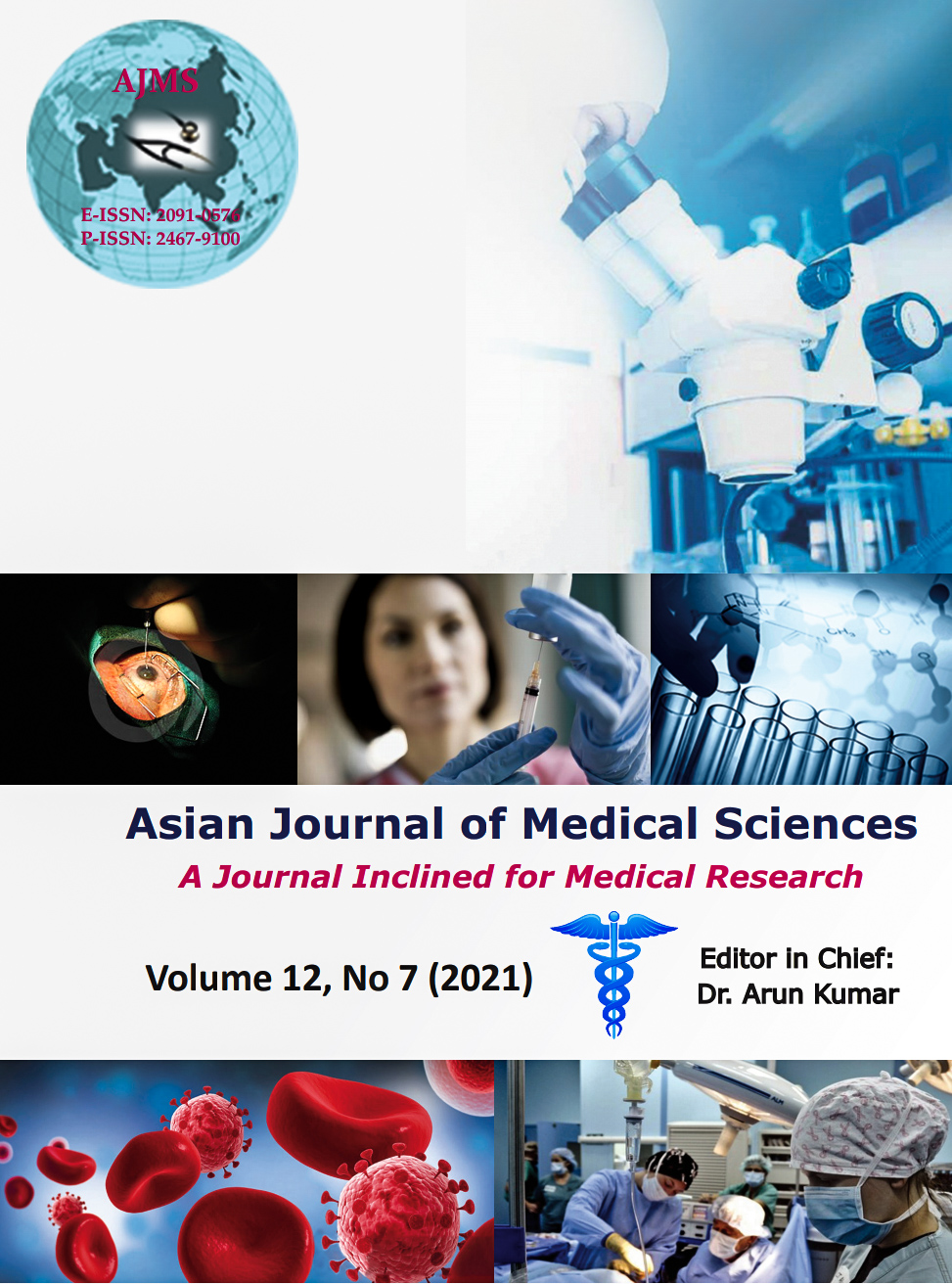A study of clinical and Immunofluorescence spectrum of Immunobullous diseases
Keywords:
Immunobullous disorders, Pemphigus, Direct ImmnofluorescenceAbstract
Background: Immunobullous disorders are a group of disorders involving the formation of a fluid filled cavity within or beneath the epidermis, due to the presence of autoantibodies against adhesion molecules in epidermis and dermis. Accurate diagnosis of these disorders requires clinicopathological correlation along with immunofluorescence study.
Aims and Objectives: This study was undertaken to describe the clinical features of immunobullous disorders and to analyse the utility of Direct immunofluorescence (DIF) in the diagnosis of these disorders.
Materials and Methods: A total of 42 Patients attending skin OPD between February 2014 and March 2017 who had a provisional diagnosis of immunobullous disease were enrolled in the study. Detailed clinical examination and DIF study were done in all cases.
Results: Out of 42 cases studied, 31 were diagnosed as pemphigus vulgaris (PV) and 11 as bullous pemphigoid (BP) that was confirmed by DIF. There were 20 (46.61%) male patients and 22 (52.38%) female patients in the age group of 18 to 81 years with a mean age of 52.64 years. A slightly female preponderance was observed. Mean age of presentation of PV patients is 50.83 years with age group range was between 18 to 77 years. Majority of patients presented at 4th and 5th decade of life. Age group range for BP was between 34 to 81years with mean age of presentation being 57.72 years. Majority of our patients presented at 5th decade or later. DIF was positive in all 42 cases (100%) of immunobullous disease. DIF in all 31 cases of PV showed 100% IgG deposition in intercellular substance (ICS) and 64.51% C3 deposition in ICS. BP showed 100% C3 deposition in all 11 cases, 63.63% IgG in seven of the eleven,18.18% IgA in two and 9% IgM, fibin in one each as a linear band at basement membrane zone (BMZ).
Conclusion: Both the clinical findings and the Imunofluorescence features are important in arriving at a definite diagnosis in immunobullous diseases. In all the cases DIF was absolutely essential tool to come to a final diagnosis.
Downloads
Downloads
Published
How to Cite
Issue
Section
License
Authors who publish with this journal agree to the following terms:
- The journal holds copyright and publishes the work under a Creative Commons CC-BY-NC license that permits use, distribution and reprduction in any medium, provided the original work is properly cited and is not used for commercial purposes. The journal should be recognised as the original publisher of this work.
- Authors are able to enter into separate, additional contractual arrangements for the non-exclusive distribution of the journal's published version of the work (e.g., post it to an institutional repository or publish it in a book), with an acknowledgement of its initial publication in this journal.
- Authors are permitted and encouraged to post their work online (e.g., in institutional repositories or on their website) prior to and during the submission process, as it can lead to productive exchanges, as well as earlier and greater citation of published work (See The Effect of Open Access).




